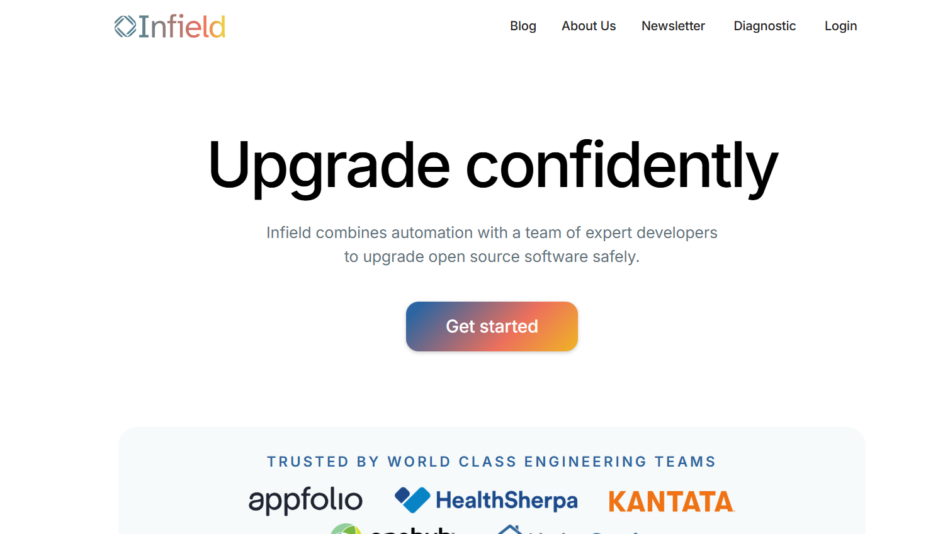Rasa is an open-source framework designed for building text- and voice-based AI assistants and chatbots. It provides tools for natural language understanding (NLU) and dialogue management, allowing developers to create contextual AI applications that can handle complex conversations. Rasa’s flexibility and composable architecture enable the development of sophisticated conversational AI tailored to specific business needs.
Features
- Natural Language Understanding (NLU)
- Interprets user inputs to extract intents and entities, facilitating accurate responses.
- Dialogue Management
- Manages conversation flows, enabling context-aware interactions and handling complex dialogues.
- Open-Source Framework
- Offers full control over machine learning models, allowing customization and integration with existing systems.
- Multi-Language Support
- Supports the development of AI assistants in almost 100 languages, catering to a global audience.
- Integration Capabilities
- Compatible with various platforms and services, enabling seamless integration into existing workflows.
- Rasa Pro
- Provides an enterprise-grade, open-core conversational AI framework that leverages generative AI for effortless assistant development.
- Rasa Studio
- Features an intuitive drag-and-drop no-code interface for effective cross-team collaboration in building and improving AI assistants.
- Managed Service
- Offers a managed service option, handling platform management to allow faster deployment and reduced total cost of ownership.
- Community Support
- Backed by a diverse community of developers, data scientists, and AI enthusiasts, providing resources and support.
- Comprehensive Documentation
- Provides extensive documentation and tutorials to assist developers in building and scaling AI assistants.
How It Works
- Install Rasa
- Set up the Rasa framework in your development environment.
- Define NLU Training Data
- Create examples of user inputs to train the NLU component.
- Design Dialogue Management
- Outline conversation flows and responses using Rasa’s dialogue management tools.
- Train Models
- Train the NLU and dialogue models using the defined data.
- Test and Deploy
- Test the AI assistant in various scenarios and deploy it to the desired platforms.
Use Cases
- Customer Support Automation
- Develop AI assistants to handle customer inquiries, reducing response times and operational costs.
- Lead Generation
- Implement chatbots to engage website visitors and collect lead information.
- Internal IT Helpdesk
- Create assistants to assist employees with IT-related issues, streamlining internal support.
- Appointment Scheduling
- Build bots to manage appointment bookings and reminders for clients.
- E-commerce Assistance
- Develop virtual shopping assistants to guide customers through product selections and purchases.
- Healthcare Consultation
- Implement AI assistants to provide preliminary medical information and schedule appointments.
- Financial Services
- Create bots to assist with banking inquiries, transaction details, and financial advice.
- Telecommunications Support
- Develop assistants to handle service inquiries, troubleshooting, and plan information.
- Travel and Transportation
- Implement chatbots to assist with booking, itinerary management, and travel information.
- Education and Training
- Build AI tutors to provide educational content and answer student queries.
Pricing
Rasa offers an open-source version that is free to use. For enterprise features and support, Rasa Pro is available, with pricing details provided upon contact with their sales team.
Strengths
- Flexibility and Customization– Allows developers to tailor AI assistants to specific business requirements.
- Open-Source Community– Supported by a large community, fostering collaboration and continuous improvement.
- Advanced Dialogue Management– Capable of handling complex conversation flows and contextual interactions.
- Enterprise Solutions– Offers scalable solutions with Rasa Pro and managed services for large organizations.
- Multi-Language Support– Enables the development of AI assistants in numerous languages, reaching a global audience.
Drawbacks
- Steeper Learning Curve– May require significant time and expertise to master the platform.
- Resource Intensive– Hosting and maintaining the platform can demand substantial infrastructure.
- Limited Managed Services– Relies heavily on in-house expertise, with fewer managed support options.
- Development Time– Customizing and deploying AI assistants may take longer compared to platforms with pre-built tools.
- Complex Setup– Initial setup and configuration can be challenging for beginners.
Comparison with Other Platforms
Compared to other conversational AI platforms, Rasa offers unparalleled flexibility and control due to its open-source nature. While platforms like IBM Watson Assistant and Amazon Lex provide robust features, they may not offer the same level of customization. However, Rasa’s complexity and resource requirements may make it less accessible for smaller businesses or those without dedicated development teams.
Customer Reviews and Testimonials
Positive Feedback
- “Rasa’s flexibility has allowed us to create a highly customized AI assistant that aligns perfectly with our brand.”
- “The open-source community and comprehensive documentation made it easier to develop and deploy our chatbot.”
- “Rasa’s advanced dialogue management capabilities have significantly improved our customer interactions.”
Constructive Criticism
- “The initial setup was challenging, and it took our team some time to get accustomed to the platform.”
- “Managing the infrastructure required for Rasa has been resource-intensive.”
- “We faced a steep learning curve, which delayed our deployment timeline.”
Conclusion
Rasa stands out as a powerful and flexible platform for building conversational AI assistants. Its open-source framework provides developers with the tools needed to create customized and contextually aware chatbots and voice assistants. While it offers significant advantages in terms of customization and control, potential users should be prepared for a learning curve and consider the resources required for implementation and maintenance. Overall, Rasa is well-suited for organizations seeking to develop sophisticated AI assistants tailored to their unique business needs.















